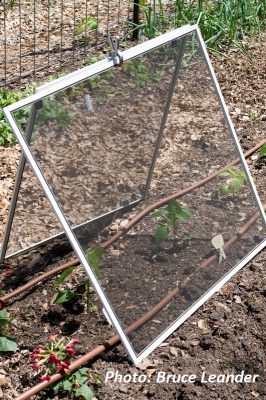August To Do List

Plant: ornamental & wildlife
- Not a great time to plant. If you must, shade newcomers and water daily if soil is dry.
Plant: food crops
- Beans
- Texas A&M AgriLife Extension Vegetable Planting Guides (Central Texas) http://aggie-horticulture.tamu.edu/travis/home-landscape/edible-gardens/growing-vegetables/
Prune
- OKAY to prune red oaks and live oaks until February. Spray immediately with clear varnish.
- No need to apply pruning paint to other trees
- Dead head flowering plants
- Late August to early September: lightly prune perennials and roses to encourage fall blooming
- Cut stalks of plants like coneflower to the rosette
Fertilize
- Foliar feed flowers and vegetables with liquid seaweed
- Container annuals
- Citrus with high nitrogen fertilizer like Citrus-tone. Fertilize every few weeks through growing season.
Insects
- Watch for aphids and spider mites. It’s easy to spray them off with a hard blast of water. Be sure to get the undersides of the leaves.
- Aphids and other insects can plague crape myrtles and other trees in summer (“raining trees” are due to the honeydew secretions). Blast with water hose on regular basis.
- Aphids and other insects can create sooty mold on plants, a fungus that develops from their secretions (honeydew). Wash off the culprits and the leaves. Remove damaged leaves to the trash (not the compost pile).
Lawn
- Keep that lawn mower setting on high. Keep the roots cool by leaving the grass long. Don’t remove more than 1/3 of the top at a time. Leave clippings on the lawn to naturally fertilize.
- It’s very important to keep the grass high in August. If September brings cooler weather and rain, weed seeds will start to germinate.
Prep
- Start planning the fall garden. Clean up debris in the vegetable garden. Apply compost and mix in organic slow-release granular fertilizer to get ready for fall plantings
- Explore native wildlflower seeds to plant this fall
- Think about next spring and the perennializing bulbs to add this fall
Other tasks
- Solarize areas where you want to kill grass or weed pests for future planting
- Collect seeds from summer blooming plants. Clean off the chaff and let dry indoors. Store in jars, envelopes, or paper bags (not plastic) to plant next spring.
- Deeply water new plants. Even if rain comes, check the soil to 3” deep to make sure their roots have water. A brief shower doesn’t mean it penetrated to the roots.
- Keep a garden journal to note bloom times and insect habits.
Tips
- Prune herbs often to encourage new growth
- Water fruit and nut trees deeply to avoid fruit drop-off
- Accept August! Plants are hunkered down, like we are. They’ll perk back up soon.
categories:
